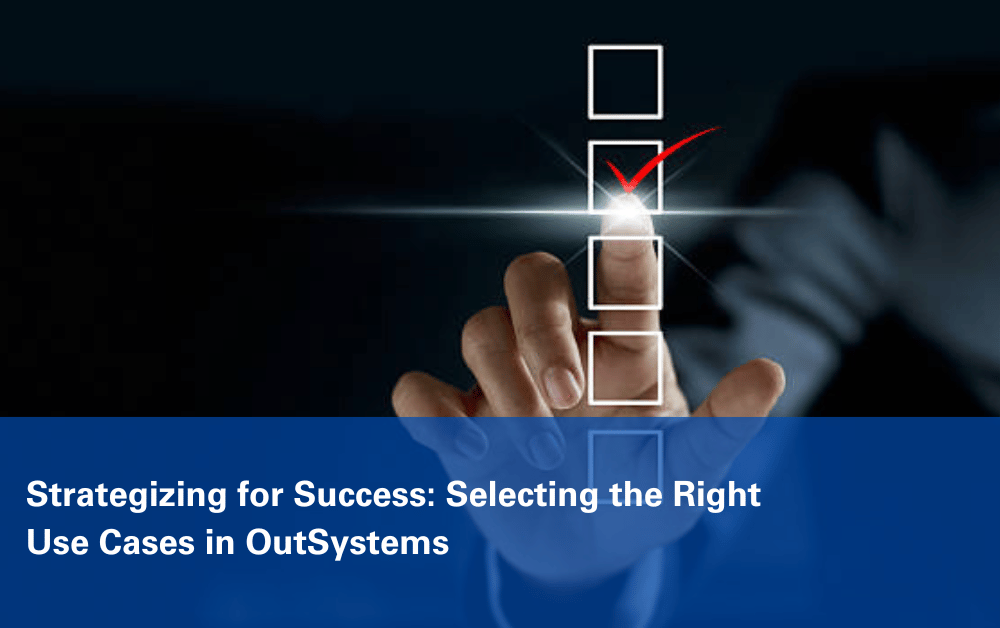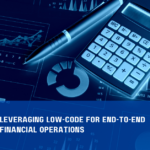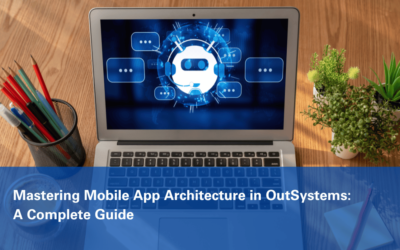Introduction
In the digital age, the transformative power of technology is not just an enabler but a critical driver of business success. Among the myriad of platforms powering this transformation, OutSystems stands out as a beacon for rapid, agile, and impactful application development.
It is not merely about adopting technology; it’s about leveraging it judiciously to create value. This blog delves into the essence of successful OutSystems projects, guiding you through the vital process of use case selection, ensuring your endeavors not only succeed but excel.
Understanding the Hallmarks of a Successful OutSystems Project
- Alignment with Business Goals
- User-Centric Design
- Technical Excellence
- Agile Delivery
1. Alignment with Business Goals: Success in the OutSystems landscape starts with alignment. Consider a financial institution leveraging OutSystems to revamp its consumer banking portal.
The alignment here isn’t just about technological uplift but about amplifying customer satisfaction, enhancing access to banking services, and ultimately driving financial engagement. The key is to tether every technological stride to a business milestone, ensuring that your OutSystems project propels your business forward.
2. User-Centric Design: Why does design matter? Because at the heart of every successful OutSystems project is a user whose needs, preferences, and experiences dictate the value of your application.
Take, for example, an insurance firm deploying OutSystems to streamline claims processing. The project transcends success if it simplifies user interaction, expedites claims resolution, and elevates user satisfaction, turning routine processes into delightful experiences.
3. Technical Excellence Through OutSystems: OutSystems isn’t just a tool; it’s a catalyst for robust, scalable, and future-proof solutions.
Whether it’s a bank enhancing its cybersecurity measures or an insurer automating underwriting, OutSystems empowers organizations to build solutions that are not just functional but formidable, ensuring technical excellence that stands the test of time and scale.
4. Agile Delivery with OutSystems: In a world where speed is synonymous with success, OutSystems enables agility like no other.
It’s about rapidly transforming ideas into applications, integrating feedback swiftly, and iterating with precision. This agility is a cornerstone of success, enabling businesses to stay responsive, resilient, and relevant.
Selecting the Right Use Cases: A Structured Framework
- Identify Business Needs
- Evaluate Use Case Alignment
- Assess Feasibility and Impact
- Engage Stakeholders
- Define Success Metrics
1. Identify Business Needs: Unearthing the right use case begins with a deep dive into your business landscape. It’s about identifying pain points, uncovering opportunities, and understanding where technology can make a tangible difference. Whether it’s enhancing customer engagement, optimizing operations, or innovating products, the right use case should resonate with your business’s core needs.
2. Evaluate Use Case Alignment: Alignment is pivotal. It’s about ensuring that the selected use case not only addresses a need but also amplifies your strategic objectives. It’s a synergy between technology and business, where the right use case acts as a lever, propelling your organization toward its goals.
3. Assess Feasibility and Impact: Not every use case is viable or valuable. It’s essential to assess both the technical feasibility and the potential impact of each use case. This assessment isn’t just about can we do it but should we do it, ensuring that your resources are channeled toward use cases that promise maximum return on investment.
4. Engage Stakeholders: Stakeholder engagement is the linchpin of success. It’s about fostering collaboration, garnering buy-in, and ensuring that the project resonates with those it aims to serve. Whether it’s through workshops, surveys, or interviews, engaging stakeholders is crucial in refining your use case selection and ensuring its relevance and impact.
5. Define Success Metrics: Success should be measurable. As you embark on your OutSystems project, define clear, quantifiable metrics that will track your project’s progress, impact, and outcomes. Whether it’s user adoption rates, process efficiencies, or revenue growth, these metrics will not only guide your journey but also illuminate your achievements.
Conclusion
Selecting the right use case isn’t just a step in your OutSystems journey; it’s a stride toward transformation. By understanding what constitutes success, aligning use cases with business objectives, and engaging stakeholders in a meaningful dialogue, you can harness the true potential of OutSystems, turning technological possibilities into business realities.
Embark on a journey of discovery, strategy, and success with OutSystems. Download our comprehensive guide, “Defining a Successful OutSystems Project: How to Choose the Right Use Case,” and transform potential into performance.
Let your journey to impactful, enduring success begin today.









